Executive Summary
SE/2008/162
ISBN 978 0 7559 5872 6
This document is also available in pdf format (632k)
Contents
Letter to the Scottish Ministers
Chapter 3 Summary of Inspections Undertaken 2008-2009
Chapter 4 Review of the Prison Inspectorate's Year 2008-2009
Previous Reports
1981 - Cmnd 8619
1982 - Cmnd 9035
1983 - Cmnd 9401
1984 - Cmnd 9636
1985 - Cmnd 9909
1986 - Cm 260
1987 - Cm 541
1988 - Cm 725
1989 - Cm 1380
1990 - Cm 1658
1991 - Cm 2072
1992 - Cm 2348
1993 - Cm 2648
1994 - Cm 2938
1995 - Cm 3314
1996 - Cm 3726
1997 - Cm 4032
1998 - Cm 4428 SE/1999/21
1999 - Cm 4824 SE/2000/71
2000 - SE/2001/227
2000 - SE/2000/71
2001 - SE/2001/227
2002 - SE/2002/191
2003 - SE/2003/287
2004 - SE/2004/207
2005 - SE/2005/175
2006 - SE/2006/198
2007 - SE/2007/183
Letter to the Scottish Ministers
To the Scottish Ministers
I have the honour to submit my sixth Annual Report to the Scottish Parliament.

ANDREW R C McLELLAN
HM Chief Inspector of Prisons for Scotland
25 August 2008
1. Overview: Seven Frustrations and Seven Signs of Hope
 SEVEN FRUSTRATIONS
SEVEN FRUSTRATIONS
1. Children in Prison
In the last four HMCIP Annual Reports the demand has been repeated for the ending of the imprisonment of children under 16 years of age. In February 2008 the following announcement was made:
Ministers plan to scrap the law that allows children to be locked up in Scottish jails without having been convicted of an offence.
Justice Secretary Kenny MacAskill wants to abolish 'unruly certificates', by which children appearing on a charge before a criminal court can be remanded in prison custody, due to their 'unruly' character or behaviour.
He will consult shortly on alternative proposals that, for example, would see under-16s either placed in secure care or made the subject of an alternative order such as Intensive Support & Monitoring ( ISMS) that includes a tag.
Mr MacAskill has decided to act following concerns, including from HM Chief Inspector of Prisons for Scotland ( HMCIP) Dr Andrew McLellan, about the detention of children in prison facilities.
However, the weeks immediately after this most welcome announcement saw not a decline, but an unprecedented rise in the number of imprisoned children. It has been so frustrating.
The frustration and the irony are not just in the facts themselves. The announcement by the Cabinet Secretary was prompted by the case of one particular boy. Weeks later that same boy was part of a small group who broke out of a secure unit and caused great damage in the process. As a result the secure unit has had to close 30 places. It is the sudden absence of these places which has caused the upsurge in the number of children under the age of 16 detained in prisons and Young Offenders Institutions.
The hope remains, however, that next year's Annual Report, which will be my final one, will at last record the complete abolition of the imprisonment of under-16s in Scotland. That will be a very good day for Scotland and for Scotland's children.
2. Food
Almost the only concern which has appeared as regularly in Inspectorate reports is prisoners' food. Again there is a story of frustration to be told this year. At least four good initiatives have been undertaken by the SPS: an examination of the true state of prison catering, a relaxation of the very strict limits on budget for food, a determination to make more fruit and vegetables available; and a trial of a possible connection between nutrition and behaviour in young men. These are all good developments.
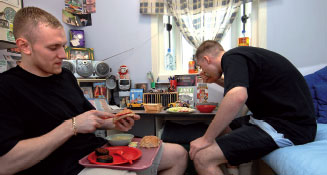 The frustration is that these developments have occurred at the most unfortunate time. Not only are further significant savings being required of the Scottish Prison Service (of which more will be said) but also the cost of food has soared. At the very time when the determination of the Scottish Prison Service to improve the quality of food in prisons has become evident it has become much more difficult to achieve. It is very frustrating.
The frustration is that these developments have occurred at the most unfortunate time. Not only are further significant savings being required of the Scottish Prison Service (of which more will be said) but also the cost of food has soared. At the very time when the determination of the Scottish Prison Service to improve the quality of food in prisons has become evident it has become much more difficult to achieve. It is very frustrating.
3. Work
Last year's Report said this about work for prisoners:
Report after Report tells the same grim story. The law requires prisoners to work. The public expects prisoners to work. Yet in nearly every prison many prisoners are not working. When they should be working - indeed, often when they want to work - there is no work for them. When prisoners are not working they are almost invariably locked in their cells.
How very frustrating it is that this must be written again - word for word - this year. Yet - and it is this which makes the whole business frustrating - the response to the concern last year was hopeful. Again it is clear that prison managers have taken this concern very seriously and the provision of work has been made a key priority. Yet it is equally clear that prisoners still spend far too much time locked in cell when they should be working. Everyone agrees that every prisoner who can work should be working each day: yet most prisoners never go to work. 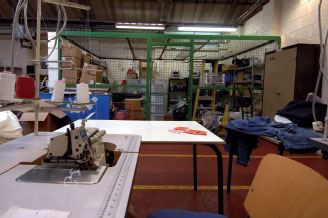
Part of the problem is overcrowding. Part of the problem may be savings, which make it increasingly difficult for prisons to provide the staff to supervise work parties. But I wonder if part of the problem is also the market orientation of prison work. A good deal of effort goes in to finding outlets for selling things that prisoners make, to selling goods. The results of this effort determine what work is available to prisoners. I wonder if this is the right way round.
Would it not be better to have prisoners working, learning useful skills, developing self-respect, acquiring industrious habits, rather than lying in bed all day? Would it not be better even if there were no immediate markets for the end product in place? Would it not be better to give away what is made (there is a prison horticulture work party where beautiful standard fuchsias are carefully raised - and then thrown away to rot)?
Only 20 years ago every convicted prisoner who was not disabled or on punishment went to work. "Prisons in Scotland" (Scottish Home and Health Dept. 1986) lists the work opportunities available. In today's atmosphere of closed workshops and empty workshops it sounds almost fanciful to list the work opportunities available to prisoners in 1986:
Manufacture - Woodworking: Machining and assembly (including panel furniture and woodmill); General woodwork; Pre-cast Concrete; Metal fabrication and welding. Textiles: Clothing, underclothes, shirts etc.; Heavy textiles(mailbag making, kitbags, etc); Knitting; Laundry and dry cleaning; Shoe manufacture and repairs; Luggage; Net and rope work. Metal recovery; Painting and finishing; Printing and bookbinding; Upholstery; Miscellaneous (including repairs, cardboard box, rough joiners, and simple assemblies).
Farms and Gardens - Farming and Forestry; Gardens.
Training - Industrial; Vocational.
Works - Blacksmiths; Carpenters; Electricians; Engineers, fitters etc.; Masons, Plasterers, Slaters; Painters; Plumbers; Labourers; Stokers.
Domestic - Cooking and baking; Cleaning, general; Cleaning, hall; Hospital orderlies; Kitchen orderlies; Librarians; Reception orderlies; Yard and gate orderlies; Clerk (Wages) etc.; Store orderlies.
Outside Employment - Farmers, local authorities (Government departments); Private firms; Training for Freedom.
Where are these opportunities today?
4. Overcrowding
Failure to improve prisons and prison overcrowding go hand in hand. The more prisoners who are crammed into a prison the fewer will be able to go to work. Not just fewer as a proportion, but absolutely fewer, since every new prisoner makes it less likely that staff will be free to escort to work or to supervise work. The more prisoners who are crammed into a prison the less adequate the food will be: the kitchen remains the same size, the serving of the food takes longer. And so on.
In 2008 the Auditor General published a report on prison overcrowding. He made these points.
Scotland's prisoner population has increased by around a fifth since 2000/2001.
Scotland's prisons are among the most overcrowded in Western Europe.
Prisoners consider cell sharing to be the worst effect of overcrowding.
Prisoners may be locked in their cells for long periods due to a lack of access to activities.
High prisoner numbers can affect prisoners' contact with their families.
Many prisoners have significant health problems which puts pressure on healthcare resources.
High prisoner numbers limit prisons' ability to carry out repairs.
Remand and short-term prisoners are most affected by overcrowding.
Plans for the prison estate may not be sufficient to accommodate projected prisoner numbers in the long term.
I welcomed the investigation carried out by the Auditor General; and I was not surprised by any of his findings. The damage done by overcrowding is a constant theme of everyone who knows Scotland's prisons. How frustrating it is that the steepest rise in overcrowding has coincided with the years in which I have been seeking to draw attention to its danger. 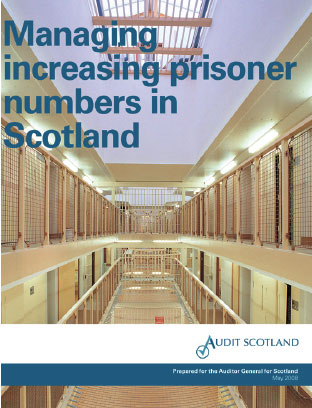
It should be no surprise that my submission to the Scottish Prisons Commission 1 was almost entirely devoted to the possibilities of defeating overcrowding and the necessity of defeating overcrowding. I suggested to them three achievable targets.
Prison is no place for a child. When I said I was shocked to discover 14-year-olds in a Young Offenders Institution and called for the end to the imprisonment of children there was press support and all-party support. Ending the imprisonment of children would be a small, but really significant, sign that things were changing.
There has been a huge growth in the last five or ten years in the proportion of prisoners who are on remand. Often they end up in the worst conditions and with the least useful day, even although they have not been convicted of anything. If you were able to think of ways of getting numbers of them out of the prison system it would transform prisons.
The number of women prisoners has risen dramatically. For two reasons, despite the difficulties since it was suggested ten years ago, this might be a good number to try to reduce. Partly because the absolute numbers are much smaller than for men, and so the problem is not so overwhelming; and partly because I am quite sure there is much more political, press and public support for and understanding of the plight of women prisoners than there is of men.
5. Remand Prisoners
I have already said something about children. Women in prison have been the subject of many speeches and much debate: but the numbers are rising more quickly than the numbers of any other sector in the prison population. Remand prisoners have been almost ignored. More than one third of them will not serve a prison service: so the title my predecessor chose for a thematic review of remand prisoners - "Punishment First; Verdict Later" - was a good one.
Remand prisoners regularly live in the worst conditions and have the worst regime in any prison. "Innocent until proved guilty", they are at the bottom of the heap - every convicted prisoner, however poor his or her conditions, however empty and frustrating his or her day, will be better off. No doubt this is another consequence of overcrowding, for there was a time, not so long ago, when the SPS sought to provide the best living conditions for remand prisoners. All the resources which a prison has for providing work, however limited they may be, are directed towards providing work for convicted prisoners (because the law says that they should work). Remand prisoners hardly ever have the chance of a job to break up the day spent locked up, sometimes with a stranger: for many of them 22 hours out of 24 will be spent behind a locked door.
In 1997 15% of Scottish prisoners on any given day were on remand; last year, only ten years later, that figure had increased to 20%. That means over 1500 people in prison on any given day are either unconvicted or awaiting sentence.
Countries which love freedom will always be wary about rising numbers of remand prisoners. There should also be more thought given immediately to the practice of detaining people on remand in high security prisons with convicted prisoners. The Prison Rules say that the two groups should not mix: but, yet again, that ideal is completely frustrated by overcrowding, which makes some mixing inevitable. 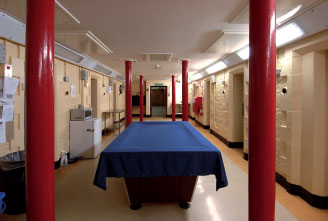
In England and Wales the remand population is much lower (15.9% of all prisoners) than it is in Scotland (20%). One reason for this is that some people on remand are held in bail hostels rather than in prison. This idea would not suit many cases: prison is the only place with sufficiently high security for some people placed on remand. But every single remand prisoner is placed in the same security category. There are people placed on remand because they are not good at turning up for court appearances, or because they may be a danger to themselves. They may not need the very high security which a prison provides. If other ways of detaining them could be found it would have a dramatic effect on prison numbers.
Consideration has been given in the past to Home Detention Curfew as a form of bail. This provision exists in England (another reason for lower numbers of remand prisoners there). In Scotland it has not been introduced, perhaps for fear that it might become an alternative to liberty rather than an alternative to prison. But perhaps the time has come for the re-examination of "tagging" as an alternative to remand in prison for those remand prisoners who do not need the highest security.
None of these ways of reducing the remand population of Scotland's prisons is ideal. But it is not enough merely to state that. For it must also be stated loudly and unequivocally that the status quo is very harmful and ought not to be allowed to continue. It is harmful to individual remand prisoners; and it is harmful to the prison estate generally because of its very significant impact on overcrowding.
6. Reducing Re-offending
Reducing re-offending is expected of our prisons. But re-offending seldom is reduced. Any success is much more difficult to achieve in prisons which are overcrowded; but the resistance of rates of reoffending to any form of intervention is deeply frustrating.
I have no doubt that this is largely a factor of the problems, difficulties and behaviour which young men carry with them into teenage years and beyond. But we need to face the possibility that it is also to do with budgets and with the amount of money we expect to spend in order to reduce re-offending. On the one hand, Kibble Secure Unit in Paisley, which holds boys under 16, can point to encouraging statistics for the reduction of re-offending. But the cost is £5,000 per week. That is six times the cost of detaining a young man in Polmont. On the other hand the Scottish Prison Service has been facing budget cuts year after year for the last six years; and this year faces the largest budget cut yet. Prisons are being asked to do more, for more prisoners, with fewer staff and less money. It is not surprising that re-offending rates continue to frustrate those who long to see them drop.
7. Poverty
The unchanging poverty, social exclusion and inequality from which nearly all prisoners suffer is the most powerful factor in inhibiting transformation among prisoners. Sociologists differ about the terminology, but there are no disagreements on the question of who prisoners are. Scotland's prisoners, like prisoners everywhere, are poor people. It almost invariably follows that the communities which suffer most from crime are the poorest communities, and that the people who are most likely to be victims of crime are poor people. And those who are released from prison will be, almost invariably, released into poverty, inequality and social exclusion. 
Figures produced by the Social Exclusion Unit for England and Wales (2002) show that:
20% of male and 37% of female sentenced prisoners have attempted suicide in the past.
72% of prisoners were in receipt of benefits immediately before entering prison.
49% of male and 33% female sentenced prisoners were excluded from school.
Around two-thirds of those prisoners who do have a job (one third of prisoners) lose it when they enter prison.
Around one in three prisoners were not living in permanent accommodation prior to imprisonment.
Just 5% of women prisoners' children remain in their own home once their mother has been sentenced.
It is unlikely that figures for Scotland would be very different. How often in the last six years have I said "We will only have better prisons when we have a better Scotland"? The improvements which prison inspection can bring to the inequalities of Scotland are very limited indeed. It is not difficult to feel frustration.
SEVEN SIGNS OF HOPE
Frustration, however, does not mean failure. Scotland's prisons are much, much better than they used to be. It is the task of the Chief Inspector to inspect and to report on the conditions in which prisoners live and the treatment they receive. In both of these aspects our prisons have changed beyond recognition in the 30 years since the modern form of inspection began.
1. Sanitation
The disappearance of slopping out is an unqualified benefit. Unfortunately it has not yet disappeared completely. Only when Peterhead Prison is replaced by the new HMP Grampian will all prisoners have appropriate access to toilets. Is it an accident that the only prisoners still to endure a form of slopping out are sex offenders, the group of prisoners for whom the public and other prisoners have least sympathy? But every other prison has moved on from the disgusting practice; and has moved on from the humiliation, risk and smell which went with it.
Thirty years ago slopping out was the lot of at least three-quarters of Scotland's prisoners. In 2002 it was still endured in Barlinnie, Perth, Edinburgh, Polmont and Peterhead. Since then reports have been published greeting the end of slopping out in these places: they always reported better living conditions for prisoners, better working conditions for staff, better motivation of staff and, crucially, better motivation of prisoners. This eradication of slopping out is an enormous improvement in the last few years.
It is a tragic waste that these gains brought by the defeat of slopping out have largely been frittered away because of the corrosive effect of overcrowding. There are still also prisoners who live in cells where toilets are unscreened (most notably in Shotts). It is often said that this is equivalent to eating and sleeping in a toilet. When these unscreened toilets have disappeared, and slopping out in Peterhead is ended, then the sanitation arrangements in Scottish prisons will be decent. 
2. Safety
The safety of prisons has increased enormously since the 1970s. I first visited a prisoner in 1972; a year or two ago I met the same man - in prison. He had been in and out countless times in the interval. He told me that there was no comparison between his first experience of imprisonment and imprisonment today. Many prisoners have told me the same thing; as have prison staff at all levels. When he first went in to prison it was not unusual for prisoners to be kicked, punched and beaten. Now that is not the case. If a first-time prisoner is asked how prison compares with his or her expectation the answer is always the same: it is much safer.
An Independent Committee of Inquiry reported in 1987 on disturbances in Peterhead Prison. It concluded that: "The regime itself is hard, brutal and lacking in compassion…. It is a matter of grave concern that 71% of the respondents to the questionnaire issued to prisoners stated that they have experienced brutality by prison staff." That is only 20 years ago; but it describes a prison system with which I am completely unfamiliar.
Perhaps five times in the last six years I have heard allegations of violence by staff against prisoners. Each of these accusations, of course, is investigated thoroughly. Whenever I ask the question, which I do with every group of prisoners in every prison (and, of course, no member of staff is present), the characteristic response from prisoners is to express surprise that the question is being asked. Occasionally prisoners like to assure me that staff "wouldn't get away with it with me", but the answer comes to the same. The only circumstances in which it is possible that allegations of violence might be sustained are when proper restraint is carried to unacceptable levels: in these circumstances it is extremely difficult to prove any wrong-doing. But the circumstances are not common. We should recognise more generously than we do the great steps forward which have been taken by our prison staff. 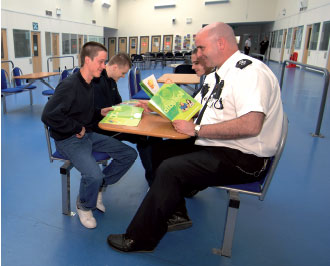
Violence against prisoners by prison staff is, of course, only one aspect of safety in prison. What about violence against prison staff; and violence by one prisoner on another prisoner? In these aspects as well our prisons are demonstrably much safer. Compare 1986 and 2007. Definitions change over the years, so the figures are not absolutely comparable. But in 21 years the number of serious assaults on staff has gone from 284 to 4; and the number of serious assaults by a prisoner on another prisoner has gone from 405 to 68. Of course the number is still too high; and the total number of assaults which resulted in a prisoner disciplinary procedure but were not classed as serious is much higher (817 in 2007). Nevertheless in an overcrowded prison system holding people who are by definition the most difficult and dangerous in the country, these are figures of which the Scottish Prison Service can be proud.
3. Links with the Community
Increasingly HMIP Reports in recent years have commented on good links developed between prisons and outside agencies. If the release of unprepared prisoners into nothing is a recipe for re-offending, so the preparation for release of prisoners by improving the circumstances into which they are released helps to build a safer Scotland. All prisons have opened Links Centres, which make links with the community outside. Nowadays, a prisoner nearing release has, through the Links Centre, a much better chance of some housing arrangement, some benefits arrangement, some health care arrangement, some job-seeking arrangement being made and waiting for him or her on the outside. 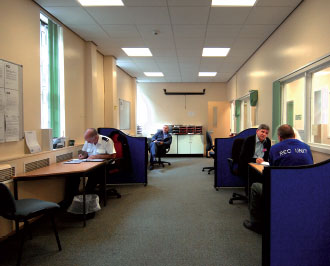
The establishment of Community Justice Authorities could make these links much stronger still. So could the current talk of "community prisons"; this means prisons which are rooted in the community where they are placed, taking prisoners from that community and releasing them back into that community. So could the development of Integrated Case Management. This system, which has replaced the old "Sentence Management" system, is already showing encouraging signs. Central to the system is improved cooperation between prison authorities and social work agencies in the community. Recent reports have indicated that this system is working well; those who manage it, and prisoners too, feel confident about its potential for reducing re-offending.
It would appear obvious that improved preparation for release into the community will benefit everyone. But obvious strategies are not always followed. It is good that increasing emphasis is being placed on the safe and well-prepared return of prisoners to the community. Keeping them out of crime and prison is in the interest of us all.
4. Work with other Inspectorates
A good experience in this past year was the cooperation with Her Majesty's Inspectorate of Education which produced a report on Good Practice in Learning, Skill and Employability in Scotland's prisons. There is a good history of cooperation between the two Inspectorates, since HMIE provide inspectors to share in the regular inspection of prisons. This special report identified 13 examples of good practice in prisons across the country. 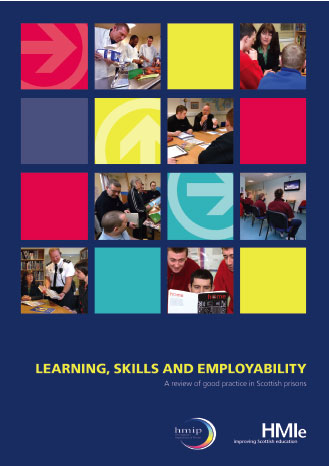
Common factors identified in the projects commended include:
Strong commitment and dedication of staff from both the SPS and the LSE provider.
Effective links into broader community networks.
Good use of nationally accredited qualifications.
Appropriate use of praise and encouragement.
The creative use and sharing of available resources.
This extract from the Report is about the "Fit Together" programme at HMP Greenock:
The Fit Together programme had operated in Greenock prison for ten years. Adults with learning disabilities from the local community attended the prison on a weekly basis to participate in a gym-based activity programme organised by prisoners. The programme was supervised and supported by the LSE provider and health and fitness instructors.
Joint activity sessions encouraged prisoners and adult learners to mix. The Fit Together group had forged effective links with the local community and had raised awareness of the issues faced by the two socially excluded groups, prisoners and adults with special needs. This had been achieved through a programme of games and social activities. Rigorous selection procedures ensured the participation of only those prisoners with appropriate social skills, security vetting and approval.
Effective partnership working was a key feature. Working relationships between fitness centre and learning centre staff were very positive. Good support and understanding from SPS residential and work party staff helped minimise disruption. Good external relationships with Inverclyde Council Community Support Service assisted the programming of the group and also provided work placement opportunities for prisoners in the local community.
Staff and prisoners alike were committed to the group and enthusiastic about it. The group provided a good opportunity for prisoners to engage with the wider community. Prisoners welcomed the opportunity to reflect on their own personal circumstances and drew satisfaction from helping others:
"It's a real morale booster and you always feel happy."
Participation had increased prisoners' self-confidence, and improved their communication and teamwork skills and personal fitness levels. Prisoners had the opportunity for their skills to be certificated and ten had successfully gained the SQA qualification "Preparing to work with people with special needs" (Unit D10 211 at Intermediate 2 level) in the last two years. A number of prisoners had also successfully completed day release placements.
This extract from the Report is about the "Independent Living Unit" at HMYOI Polmont:
The Independent Living Unit project was designed to integrate a number of initiatives into a joined-up programme to prepare young offenders effectively for release. Potential participants who were within 12 weeks of release were prioritised and selected through the Integrated Case Management ( ICM) process and referrals from Falkirk Council social work and housing departments and Phoenix Futures.
The programme was delivered in a purpose-built independent living unit facility with prisoners attending for three-and-a-half days each week, Monday to Thursday. During the four-week programme the group worked together to establish and maintain harmonious relationships, manage the domestic aspects of the unit and develop new skills in coping with life in the community. SPS provided training in finance, housing issues, domestic skills such as cooking, cleaning, and food hygiene, managing appointments and relationships with community and other agencies. Partnership working was good with a number of external partners including local banks, credit unions, Motherwell College and peer educators from the community. Forth Valley Health Board had donated £500 to support healthy eating initiatives. Since May 2007, four groups had completed the programme, which was available to both mainstream and protection prisoners.
Participants in the programme developed in maturity and provided each other with effective support as the programme progressed. Their standards of behaviour, team working and domestic skills improved from an early stage. As a result of participation in the programme, young offenders were more able to acknowledge and reflect on their own weaknesses, to discuss their situation with family members and to prioritise future personal development. SPS staff carried out pre-programme and post-programme evaluations in collaboration with the participants. The evaluations identified the knowledge and skills gaps to be addressed.
Participation benefited from this focused approach. The programme duration and timetable was improved to take account of the difficulties prisoners experienced in coping with long times out of cell. This initiative also addressed a number of issues relating to prisoners' ability to cope with life in the community after release. These issues had been well chosen and participants benefited from the opportunities to address their skills and knowledge gaps and prepare themselves better for life in the community. It was too early to evaluate the impact on prisoners who have been released but behaviour, attitude and skills had improved among those who had completed the programme.
5. Prisoners' Health
An inescapable characteristic of prisoners is their bad health: bad physical health and bad mental health and bad spiritual health. For years there have been discussions about the transfer of the care of prisoners' health from the Scottish Prison Service to the National Health Service: an option which I first called for in my Annual Report of 2005-2006. These discussions appear to be about to bear fruit. It is hoped that this will make it less likely that many prisoners who lead chaotic lifestyles and are often homeless will drift out of health care completely when they leave prison. 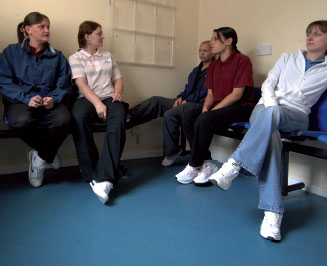
The bad health of prisoners is directly related to the poverty, inequality and social exclusion from which they come. So it is most encouraging for the future of our prisons to read that the Chief Medical Officer for Scotland believes that Scotland is on the right road to tackling health inequality. Dr Harry Burns described the Scottish approach to tackling health inequality as "the best in the world". In the long term that is the best possible news for prisoners and for prisons.
6. Tackling Alcohol Abuse
Prisoners and their families will benefit and prisons will be better and there will be fewer victims of crime as a result of the renewed attention which is being paid to the destructive power of misused alcohol. Of course it is right to focus resources on the destructive power of heroin; and it is good that the recently published Drugs Policy of the Scottish Government pays special attention to the drug-related behaviour of prisoners. But these resources must not be found at the expense of resources directed towards changing the heavy, repeated, hopeless drinking patterns of prisoners. 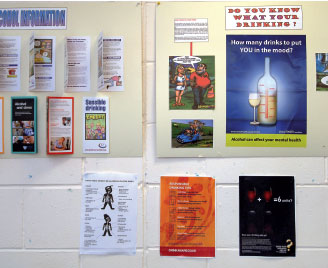
A recent study showed that 47.4% of Young Offenders in 1979 were drunk when they committed their crimes. In comparison the figure for 2007 was 76.8%. So, however harmful the effects of drugs, the effect of alcohol is worse than ever. So many crimes are committed by drunk people. So many victims of crime are victims because of alcohol abuse. The Chief Medical Officer for Scotland has published figures showing that in the past 15 years alcohol consumption has doubled; and alcohol-related mortality rates in Scotland are double the rates in the rest of the UK.
Desperate as this picture is, it is encouraging that the problem is being recognised. That recognition is a first step to making Scotland a better place to live and making our prisons less full.
7. Hope and Change
The best experience I had in prisons recently was in HMP Edinburgh. Jean Vanier visited the prison to speak to prisoners. He is the founder of L'Arche, a community for people with learning difficulties and their helpers. He spoke to 50 prisoners for nearly an hour; and not one wished it shorter. He spoke about pain and guilt and failure and hope and self-respect and beauty and God. And he invited prisoners to change. Each one of us has to become a witness of hope. If one person can say 'I have changed', others are able to say 'I want to change'.
It is a commonplace to say that prisoners expect very little for themselves and for their lives. They tend to sink into a grim acceptance of crime and despair and uselessness. Vanier spoke a different message: a message of hope and of change. That day in Edinburgh Prison prisoners heard him and believed him. The conviction that our prisons and our prisoners will not necessarily always be as they are is essential. It is essential for prisoners if they ever are to change. And it is essential for those in charge if our prisons are ever to be changed. 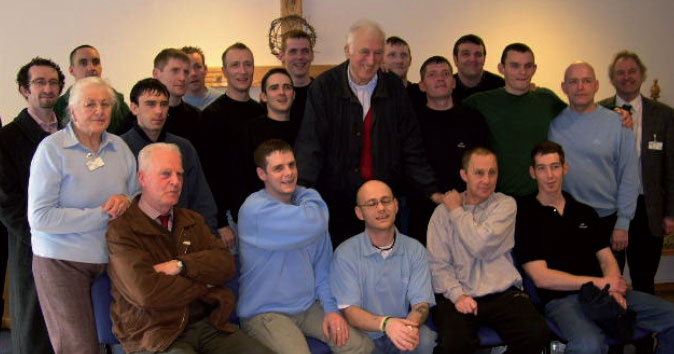
2. Summary of Inspections Undertaken
Establishments
HMYOI Polmont
Full inspection 30 April-4 May 2007
- There have been no escapes in the past year.
- A major building project is underway and this is being managed very well.
- Prisoners feel safe and relationships between staff and prisoners are very good.
- Healthcare is very good.
- There is a good range of education and vocational opportunities available and the Learning Centre offers modern and attractive accommodation.
- Implementation of the new 'Constructs' programme to address offending behaviour has been impressive.
- Arrangements for maintaining contact with families are good, although the visits room is small and noisy.
- Imaginative ways of dealing with violence within the establishment are being developed, including the use of Restorative Justice and Personal Support Plans.
- There is not enough food for young men.
- The number of children under the age of 16 is not decreasing but the establishment does well to provide for them within its limitations.
- The establishment is overcrowded.
- Young offenders are being sent to adult prisons.
- Prisoners are sharing cells that were built for one person.
- Prisoners are spending too much time in their cells.
- Remand prisoners have a very empty day.
- The Reception is not fit for purpose and too much use is made of the small holding cubicles.
HMP Kilmarnock
Full Inspection 17-21 September and 3 December 2007
- There have been no escapes in the past year.
- Relationships between staff and prisoners are good.
- There has been a significant reduction in serious incidents over the past five years, despite one very serious incident. Prisoners and staff feel safe.
- The prison is clean, although the accommodation is starting to show signs of wear and tear.
- Prisoners used to spend a lot of time out of their cells, but this time is now reducing.
- Healthcare has improved, although the health centre itself is very cramped.
- Much effective learning takes place although this is primarily as a result of peer-to-peer support. Prisoners on remand have access to education.
- There is purposeful activity being carried out in the workshops, although not enough prisoners have access to these areas.
- Integrated Case management operates on a superficial level. There is scope for more meaningful involvement of prisoners and more effective contribution by personal officers to ensure effective progression.
- The security arrangements for prisoners' visitors and other visitors to the prison significantly slow up access to the prison.
- Prisoners spend far too long in reception: sometimes up to five hours.
HMP Inverness
Unannounced Full Inspection 5-9 November 2007
- The basic necessities of life are provided although some of the accommodation is very poor and some cells have no window leading to a lack of light and fresh air. The food is amongst the best in the SPS; the prisoners' shop is very good; and the laundry arrangements are also very good.
- The prison is safe; relationships are good; anti suicide measures are good; there are few drugs; and there is no obvious evidence of bullying.
- Most staff and prisoners know each other. No inappropriate nicknames are used. However, not all staff wear their name badges. A number of prisoners spoke very positively about the way they were treated by staff.
- Escort staff treat prisoners well. Vehicles are clean. Prisoners are not handcuffed coming off vans. However, there are some long journeys which may be uncomfortable. Prisoner escort arrangements are carried out appropriately.
- The visits room is poor; booking arrangements are patchy; there is very little information for visitors; and there is no opportunity for families to participate in induction.
- Privileged mail and disciplinary and complaints procedures are all handled appropriately.
- All prisoners have an entitlement to education including those on remand and those serving short-term sentences. Between a third and one half of prisoners are regularly attending education classes. However, too few prisoners are able to access work-related training. The library arrangements are excellent.
- Work opportunities in cleaning, laundry and the kitchen are available for around 46 prisoners. However, the large workshop has been closed and no new work opportunities have replaced those lost from this workshop. There is significantly less useful work available since the last inspection.
- The provision of healthcare is as good as that provided in the community.
- There is no pre release course and the Links Centre is poor. There are very good links with Partner Organisations in the community and the prison is very well integrated with community support services. However, only one intervention to address offending behaviour is in place.
Self Assessments
Last year the Inspectorate developed a self assessment framework which enables Governors to measure their regime delivery against the Standards Used in the Inspection of Prisons in Scotland. The process of self assessment does not detract from the need for independent inspection. The self assessment is also designed to enable prison staff to better understand the main areas to be examined in the course of an inspection.
The introduction of self assessment has also enabled the Inspectorate to carry out more focused work when visiting a prison informally or when following up an area of concern.
A self assessment is always requested prior to an inspection. It can also be requested following an inspection to ascertain progress or it may be used following an informal visit where concerns have been raised. Following receipt of a self assessment HMIP decide on how to progress it. Outcomes from analysis of these assessments can be an informal visit to look at areas of concern, new initiatives or good practice; an inspection on a particular theme; or a full inspection if significant areas of concern are noted.
In 2007-2008 Self Assessments were received from the following establishments:
- HMP Peterhead July 2007
- HMP Dumfries July 2007
- HMP Aberdeen August 2007
- HMP Inverness August 2007
- HMP Barlinnie January 2008
- HMP Glenochil January 2008
- HMP Shotts January 2008
- HMP Edinburgh January 2008
- The Open Estate January 2008
Other Reports
Legalised Police Cells2007-2008
There are nine Police Stations in Scotland where police cells have been "legalised": in them prisoners (as opposed to those taken into custody by the police) can be detained for a period up to 30 days. These nine Police Stations are all in places which are not near to prisons (where these prisoners would otherwise be held): Lerwick, Kirkwall, Thurso, Stornoway, Lochmaddy, Oban, Campbeltown, Dunoon and Hawick. The cells at Ayr were discontinued from 30 November 2002. The need for the cells within Northern Constabulary (Lerwick, Kirkwall, Thurso, Stornoway and Lochmaddy) was an ongoing issue throughout the year. The cells were discontinued in February 2008 and then reinstated. It is the responsibility of HM Chief Inspector of Prisons to inspect legalised police cells in the same terms as prisons, and to report on the conditions and treatment of prisoners in them.
A number of common themes and issues were highlighted:
- The most recent version of the Prison Rules and other information notices should be available.
- Information on how to access the relevant Visiting Committee and how to make a complaint should be available.
- All prisoners should be provided with the opportunity to exercise in the open air.
- Some basic furniture should be available when cells are being used.
- Toilets in cells should be screened.
Learning, Skills and Employability: A Review of Good Practice in Scottish Prisons2007-2008
This was a joint thematic carried out with HM Inspectorate of Education. The review is the first time that potential examples of good practice in Learning, Skills and Employability identified through the inspection programme or put forward by establishments have been evaluated and described in detail. It emphasises the fact that inspection is as much about sharing good practice where it is found as it is about identifying where improvement is required.
Main Findings
There were a number of examples of good practice within the field of LSE. Overall, there was a wide range in the quality of LSE provision but in a number of cases, prisoners' lives had been positively transformed as a result of a high-quality LSE experience.
Success Factors
Vision and commitment
- Establishment's recognition of the value of learning programmes.
- The strong commitment and dedication of staff from both the SPS and LSE provider.
- Establishments' willingness to adopt a flexible approach.
- Providers who were both flexible and creative in identifying and overcoming obstacles in the process to achieve the agreed goal.
Partnership
- Effective partnerships and working relationships both internally and with external agencies at a local level.
- Effective links into broader community networks such as local authority literacy partnerships.
- Involvement of local employers at an early stage with regard to employment initiatives.
- Learning planning and activities.
- Learning that was relevant and linked to prisoners' experiences and interests.
- Learning opportunities well matched to identified local needs and gaps in the market.
- Activities which were purposeful and had an end product or outcome.
- A structured approach to vocational training.
- Good use of nationally accredited qualifications.
- Transferability of learning outcomes for use in the community setting.
Ethos and Promoting Achievement
- Focus on motivating prisoners to get involved and complete programmes.
- The active involvement of prisoners as stakeholders in the activity.
- Appropriate use of praise and encouragement.
- Recognition and celebration of achievement.
- Encouragement of positive relations between prisoners, their families and their children.
Institutional Context
- The creative use and sharing of available resources to gain maximum impact.
- Programmes adapted to comply with necessary security measures.
- Prisoner transfers managed to minimise impact on learning.
3. Review of the Prison Inspectorate's Year 2007-2008
Inspections and Other Reports
Inspections for the year were completed as follows.
Full Inspections
|
HMYOI Polmont |
30 April-4 May 2007 |
|
HMP Kilmarnock |
17-21 September 2007 |
Unannounced Full Inspection
|
HMP Inverness |
5-9 November 2007 |
Self Assessments
|
HMP Peterhead |
July 2007 |
|
HMP Dumfries |
July 2007 |
|
HMP Aberdeen |
August 2007 |
|
HMP Inverness |
August 2007 |
|
HMP Barlinnie |
January 2008 |
|
HMP Glenochil |
January 2008 |
|
HMP Shotts |
January 2008 |
|
HMP Edinburgh |
January 2008 |
|
The Open Estate |
January 2008 |
Other Reports
|
Legalised Police Cells |
2007-2008 |
|
Learning, Skills and Employability: A review of good practice in Scottish prisons |
2007-2008 |
Submission to the Scottish Parliament
The 2006-2007 Annual Report was laid before the Scottish Parliament on 16 November 2007.
Staff
|
March 2008 |
April 2007 |
|||
|
HM Chief Inspector |
Dr Andrew McLellan |
(F/T) |
Dr Andrew McLellan |
(F/T) |
|
HM Deputy Chief Inspector |
John T McCaig |
(F/T) |
John T McCaig |
(F/T) |
|
HM Assistant Chief Inspector |
Dr David McAllister |
(F/T) |
Dr David McAllister |
(F/T) |
|
HM Inspector |
Karen Norrie |
(F/T) |
David Abernethy |
(F/T) |
|
Personal Secretary |
Janet Reid |
(F/T) |
Janet Reid |
(F/T) |
A list of Specialist and Associate Inspectors for the year is provided below.
HMYOI Polmont
|
John Moffat |
Associate Inspector |
|
Stewart Maxwell |
Education Adviser |
|
Karen Corbett |
Education Adviser |
|
Rhona Hotchkiss |
Healthcare Adviser |
|
Social Work |
Addictions and Social Work Inspection Agency Adviser |
|
Simon Brown |
Associate Inspector |
HMP Kilmarnock
|
Stewart MacFarlane |
Acting Inspector |
|
Jan Clark |
Associate Inspector |
|
Karen Norrie |
Associate Inspector |
|
Peter Connelly |
Education Adviser |
|
Lesley Brown |
Education Adviser |
|
Rhona Hotchkiss |
Healthcare Adviser |
|
Social Work |
Addictions and Social Work Inspection Agency Adviser |
|
Tom McGonigle |
Guest Inspector |
HMP Inverness
|
Jim Rooney |
Education Adviser |
|
Donald Macleod |
Education Adviser |
|
Rhona Hotchkiss |
Healthcare Adviser |
|
Social Work |
Addictions and Social Work Inspection Agency Adviser |
Finance
|
The Inspectorate's budget for 2007-2008 was £335k. Of this: |
|
|
Staff costs for five full-time staff |
£303k |
|
Advisers, training, travel and subsistence and other running costs |
£32k |
Communications
Recent reports can be found on our website ( www.scotland.gov.uk/hmip ). Email: andrew.mclellan@scotland.gsi.gov.uk .
Footnote
1 The Scottish Prisons Commission was convened during the year 2007-2008 to take stock of how Scotland uses imprisonment.
